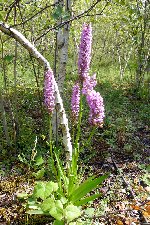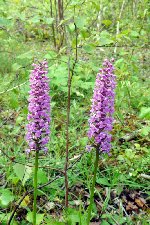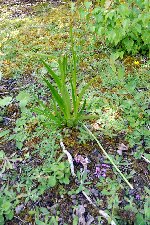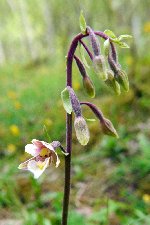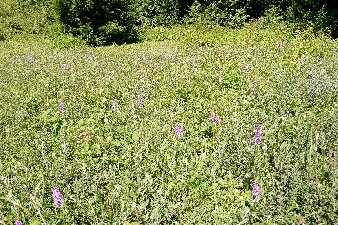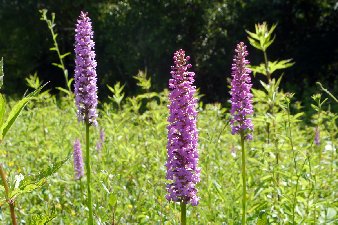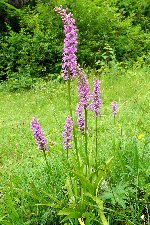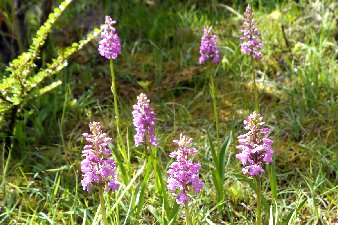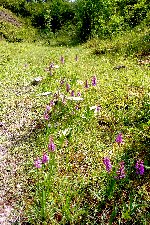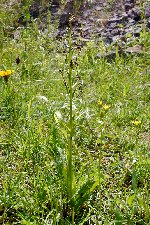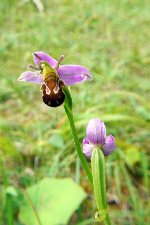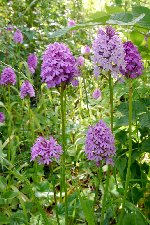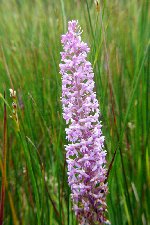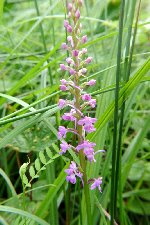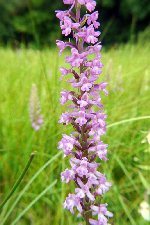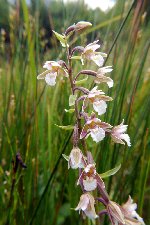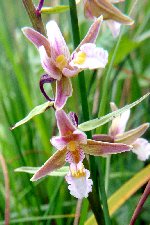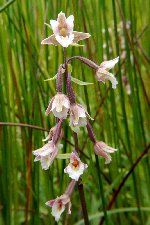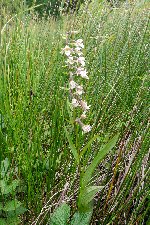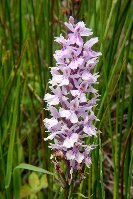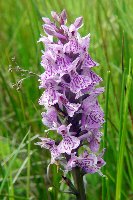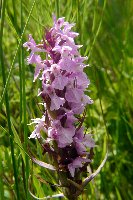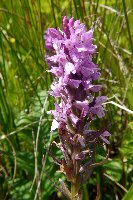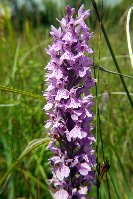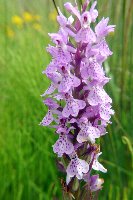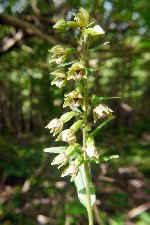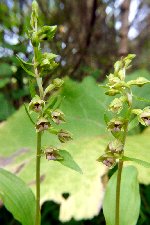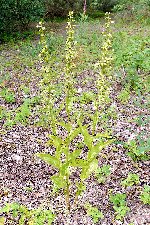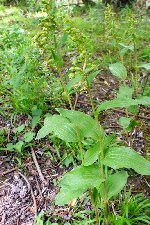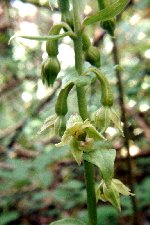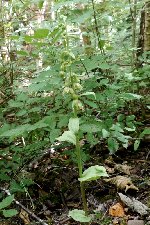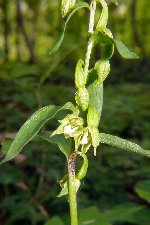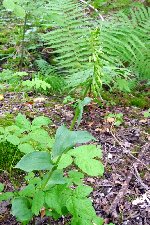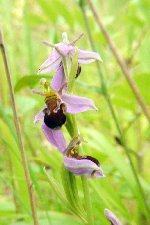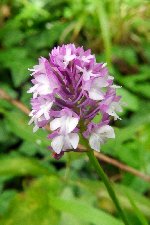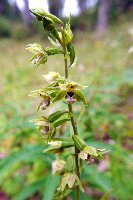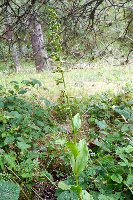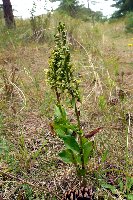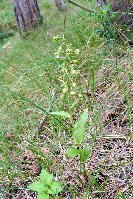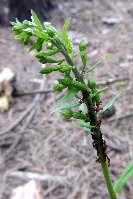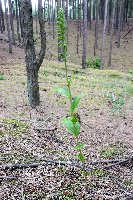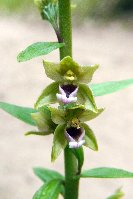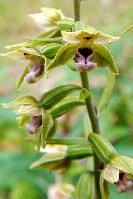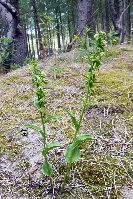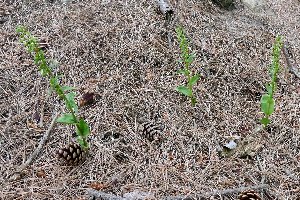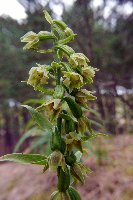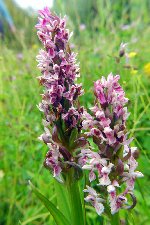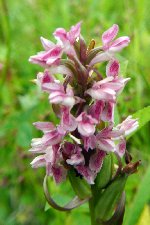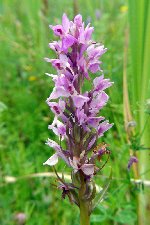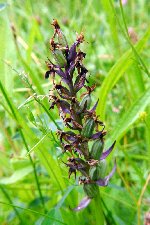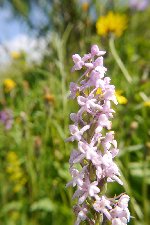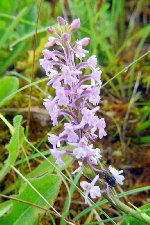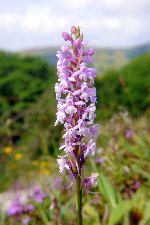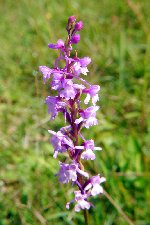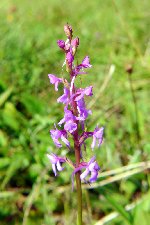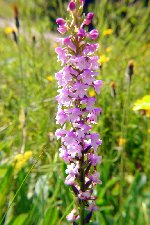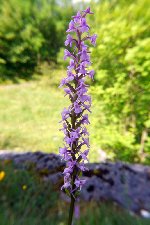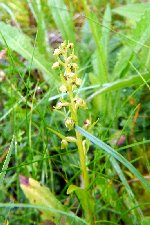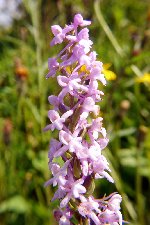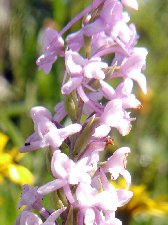|
|
|||||||||||||||||
|
|
|||||||||||||||||
 |
|
Anderton Country Park, 1st July 2017 (SJ666749 SJ662755) We are back here again to see the Marsh Fragrant Orchids. Harrap stated that thousands grow at Witton Lime Beds, and I have always assumed this references Neumans Flash. Our last visit did not yield thousands, and neither did this visit; a few hundred at most. It seems that the birch may be having a detrimental effect on the orchids, as several patches have been cut back and there may be a programme of gradual clearance. What was more annoying was that it looked as if someone had been for a walk through the orchid area, picking and discarding all the flower heads in passing. It was commented (on social media) that pheasants are known to display this behaviour, but this looked too deliberate and this area is not what I imagine pheasant country to look like. In my opinion it is yobbish behaviour. The small clump of Marsh Helleborines are still there and just beginning to open. There was a good display of several hundred Marsh Fragrants in the meadow about a mile away towards the Boat Lift end of the park. The flower heads peek out of the creeping willow. But again there is no sign of the Northern Marsh Orchids were saw there some nine years ago. I have to assume that they are lost for good, but may flower somewhere else in the park. Llanymynech Rocks, 2nd July 2017 (SJ2677421890) Previous visits here have been later in the year, on the hunt for Autumn Lady's Tresses, and all we have seen have been a few late flowering Pyramidal and Common Spotted Orchids with some seeding Fragrant Orchids. It is the latter we have come for, for identification purposes. We start off heading for the English Quarry (the quarrying spread across the English - Welsh border) and we find one nice group of Marsh Fragrant Orchids. I thought there were more than this. However, further along, in a dip we find six different species - the three mentioned plus a few late flowering Bee Orchids, Common Twayblades, and the well and truly finished Greater Butterfly Orchids. That is three more species to add to the site. The Marsh Fragrants put on the best display with around 100 in flower in this one small area. Over in Welsh Quarry, apart from a great view over the plain of the River Severn, there is little to see except for some great displays of more Pyramidal Orchids. History buffs may wish to know that Llanymynech is now considered to be the site of the final battle of Caractacus. This British chieftain had led the resistance to the Romans, but their legions defeated the Ordovices here, cementing their hold on Britain. Sweeney Fen, 2nd July 2017 (SJ2746525025) This little reserve is a real gem, hidden from the road. All you can see is a gate; the noticeboard cannot be seen until you enter. Take wellies with you, as even in July it literally a fen, fed by calcareous streams. Continuing along the path that goes through the middle of the fen I spot some Dactylorhiza towards the top end of the wet ground standing head and shoulders above the ordinary Common Spotteds. I have seen reports of Southern Marsh Orchids growing here and hybridising. Some these orchids shown below are closer to Southern Marsh Orchids - flowering rather late in the season though.
Marford Quarry, 3rd July 2017 (SJ356560) Last year I heard about Dune Helleborines growing here, and was directed to three plants. The visit was too late to see them at their best. This year we have arrived at the peak of flowering and in an area around those three plants we find 35+, including a magnificent three stemmed plant growing in open ground. Just how was this site and that triplet missed over the years, when it is a nature reserve? In my own defence, these are growing in an area away from where I usually walk. This seems to be a good year for Green-flowered Helleborines. Like at Alyn Waters there seems to be little evidence of slug damage this year; a benefit of a dry spring. We count some 25 in the glade that had the canopy clearance a few years back, and over 50 in the woodland up the hill above. The are probably double that number of plants in flower if one were to make an extensive search. These are clearly var pendula, now we can see them flowering properly and naturally open. There is also a very attractive two-tone Pyramidal Orchid. As we wend our way I spot another late flowering Bee Orchid. Ainsdale Woods, 7th July 2017 (SD2996111219) A slow start here with only the occasional Dune Helleborine spotted - then they become plentiful. I spot one plant that has a very dense flowerspike. Is there a var densiflora? We are going to be a bit more adventurous today and start by exploring right under the pines on what must be old dunes. There are more Dune Helleborines, some smothered with aphids being groomed by ants, next to some Green-flowered Helleborines, though less than half of these had open flowers. Nevertheless, you can see that they are var. pendula, like those at the Wrexham sites. The wandering spirit continues by not retracing our steps back to the car as usual, but by heading back through the woods. This pays off with a nice spot with some good examples of both species.
West Lancashire, 7th July 2017 I am holding back on this location's name till I have a chance to return. We were told of it back in June, but that was when I couldn't drive. Now it is late in the season, but it is worth a scouting visit. Being a flower meadow there is now much tall growth, but we still find orchids in flower. Here to look at the Chalk Fragrant Orchids here, and they make a great display with all the other wild flowers. This species is a lot more diverse in form and colour, contrasting with the more uniform Marsh Fragrants; compare to those at Anderton country Park.
The Frog Orchids here seem to have had a bad year. Only one small specimen could be found, and only the blackened and withered remains of the large plants could be seen. Perhaps the dry and the hot weather contributed in a bad way for this species here. They do flower earlier here, so this could be a site specific problem.
|
|
|
||||||||||||||||||||
